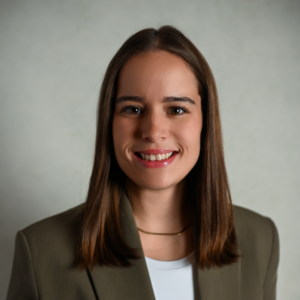Written by Alicia Cronin, Ph.D.

Teacher, doctor, veterinarian. Growing up in a small rural town in Canada, these were the types of jobs you would say when somebody asked what you wanted to be when you grew up. These were the jobs that you were taught about at school. It was hard to even imagine that there was a whole world of opportunities in the realm of science that was surrounded by discovery and research. Luckily, I had the privilege of being able to explore any of my interests growing up. From sports to science to art, my parents always encouraged me to try anything and learn what I liked and disliked. As a high school science teacher, my father instilled the interest of science from an early age. Whether it be learning about the stars or dissecting a frog at the kitchen table, I was able to discover and explore science in a way that was paramount to my future career decisions.
Even though I believe my journey into academia started as a child, my first exposure to this field was during the summer before my final undergraduate year where I worked as a student research assistant at the Durham Regional Cancer Centre in Oshawa, Canada. This experience opened my eyes to the more “hidden” world behind the healthcare field, and how essential it was for the development and advancement of the different health fields. This led me to pursuing a PhD in Medical Biophysics at Western University in London, Canada. My research focused on developing a quantitative pH-weighted MRI technique in the cervical spinal cord, with the eventual purpose of being implemented in degenerative cervical myelopathy patients to discover a surgical recovery biomarker. During this time, I fell in love with the field of spinal cord imaging, which is extremely under researched compared to the brain, its central nervous system counterpart, but just as important to understand different neurological processes and diseases.
As I was attending conferences throughout my training, one group’s research kept being at the forefront of the spinal cord MRI field. This is the Neuroimage Outside of the Brain (NOB) lab at Vanderbilt University, led by Dr. Seth Smith. I had the opportunity to speak with him on multiple occasions and he was always willing to give his expertise on the development aspect of my work. As I was reaching the end of my PhD training, I wanted to continue expanding and developing my knowledge in the field of spinal cord MRI and I couldn’t think of a better place to learn than Vanderbilt and with the NOB lab.
Since April 2023, I have worked under the supervision of both Dr. Seth Smith and Dr. Kristin O’Grady as a postdoctoral research fellow. While at VUMC, I have extended my expertise to include other quantitative MRI techniques in the spinal cord as well as transitioning to image the thoracic and lumbar portion of the cord, which is even more challenging than the cervical cord. As my time as a postdoc progresses, I hope to continue to learn and challenge myself in this field and continue to be involved in the postdoc community at Vanderbilt. I also hope to become involved in community work in Nashville that allows for children to have the opportunity to experience the STEM field as I did as a child and cultivate a love for science.